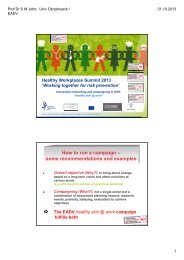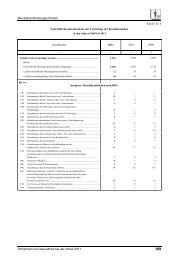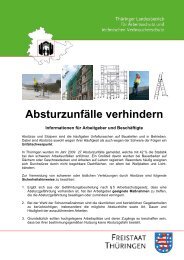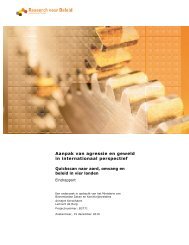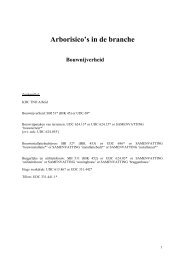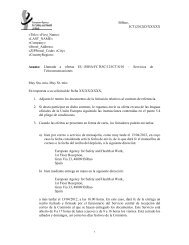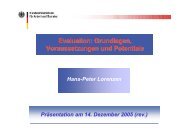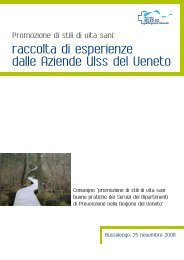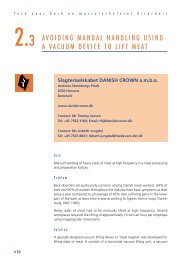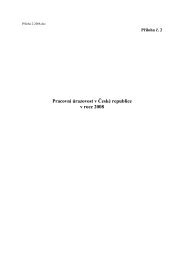ESENER-PSR 2009 - European Agency for Safety and Health at Work
ESENER-PSR 2009 - European Agency for Safety and Health at Work
ESENER-PSR 2009 - European Agency for Safety and Health at Work
You also want an ePaper? Increase the reach of your titles
YUMPU automatically turns print PDFs into web optimized ePapers that Google loves.
1.2.2 Consider<strong>at</strong>ions in terms of the contents of the study<br />
There are several reasons why to choose the “establishment” as unit of enquiry <strong>for</strong> a survey<br />
like the <strong>ESENER</strong> which has a them<strong>at</strong>ic focus on health <strong>and</strong> safety risks <strong>and</strong> practices:<br />
While in multi-site companies rough guidelines about the management of health <strong>and</strong><br />
safety issues (such as the rules on whether or not to carry out risk assessments or the set<br />
up of health <strong>and</strong> safety action plans) are often decided <strong>at</strong> the central level, the local units<br />
probably often have the possibility to decide over some details of these regul<strong>at</strong>ions on<br />
their own.<br />
Even where the general guidelines or collective agreements are equally valid <strong>for</strong> all<br />
establishments belonging to the same company, there may be significant differences in<br />
the practical applic<strong>at</strong>ion of these guidelines. These differences may result from differing<br />
styles of leadership <strong>and</strong> working cultures within the various establishments or from<br />
different types of work carried out in the various sites. The regul<strong>at</strong>ions valid <strong>for</strong> the mainly<br />
administr<strong>at</strong>ive staff in the n<strong>at</strong>ional headquarters of a bank or a supermarket chain <strong>for</strong><br />
example are likely to differ significantly from those applied in the various branch offices or<br />
local super markets all over the country. Taking the company as unit of enquiry would<br />
imply the risk of a significant bias in large multi-site companies since answers would<br />
mainly be oriented <strong>at</strong> the situ<strong>at</strong>ion in the headquarters <strong>and</strong>/or would r<strong>at</strong>her refer to policy<br />
(i.e. wh<strong>at</strong> is supposed to be the case) than to practice. By using an establishment sample<br />
instead, survey results are based much more on the local experience <strong>and</strong> they are<br />
interpretable against the background of the specific constraints imposed by the activity<br />
carried out in these local units.<br />
Some questions of the <strong>ESENER</strong> questionnaires concern (<strong>at</strong> least indirectly) the<br />
practicalities of management-employee rel<strong>at</strong>ions in OPSH issues. Although often a certain<br />
common philosophy may be identifiable within the various units of a multi-site company,<br />
the rel<strong>at</strong>ionship between management <strong>and</strong> employees <strong>and</strong> the general clim<strong>at</strong>e often differ<br />
widely from establishment to establishment. For this reason, questions concerning th<strong>at</strong><br />
rel<strong>at</strong>ionship can hardly be answered adequ<strong>at</strong>ely by respondents in the headquarters.<br />
1.2.3 Practical implic<strong>at</strong>ions<br />
The decision between “company” or “establishment” as unit of enquiry has no implic<strong>at</strong>ions <strong>for</strong><br />
so called “single-site companies”, i.e. <strong>for</strong> companies whose activities are confined to one<br />
geographical place <strong>and</strong> do not have any legally dependent branch offices, production sites,<br />
sales units or the like either <strong>at</strong> the same loc<strong>at</strong>ion or anywhere else in the country. For singlesite<br />
companies, the terms establishment <strong>and</strong> company can be used interchangeably. For<br />
multi-site companies, however, the choice of the unit of enquiry has implic<strong>at</strong>ions.<br />
In some of the countries th<strong>at</strong> had to be covered by the survey, the need to build samples <strong>at</strong><br />
establishment level posed a series of difficulties. Interviewing <strong>at</strong> establishment level not only<br />
9



